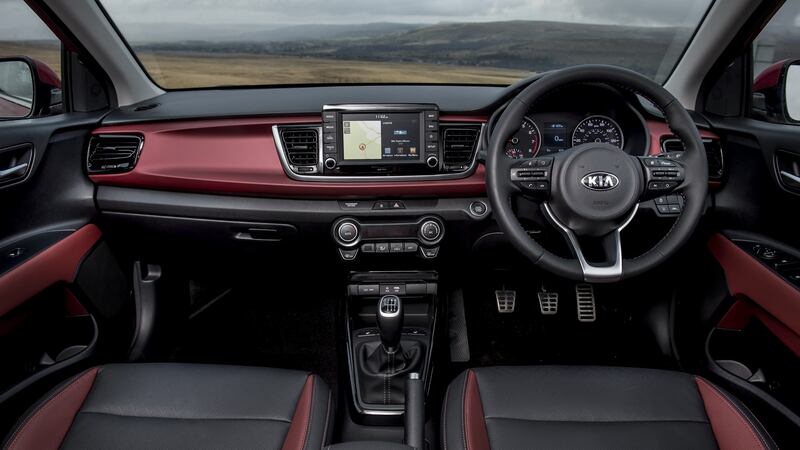The humble Rio supermini, despite being the Kia's number two best seller globally, has not been a sales success in Ireland. In 2016 it was ranked 66th on the Irish market, recording 534 sales compared with Kia's smart-looking Sportage crossover, which had 2,871 registrations.
So what hope for the fourth-generation Rio, which goes on sale in Ireland on March 1st with prices expected to start from circa €15,950 for the 1.2-litre LX?
It looks the part for a firm eager to impress with design, but no matter how good it is – and it is pretty good – it’s just not on the radar of most buyers.


Rio sits on a revised platform, it is lighter, plus it gets a host of new driving aid technologies. Notable advances in safety equipment come fitted to one model only, the EX mid-grade ADAS. This model as standard has the potentially life-saving autonomous emergency braking system with pedestrian recognition and lane departure warning. This extra safety equipment looks set to earn a five-star Euro NCAP rating.
Hatchback only
Europe gets one body style, a five-door hatchback. The Rio's engineers have stretched the car by 15mm to 4,065mm. More importantly interior space benefits from a 10mm longer wheelbase (2,580mm). This helps deliver extra rear legroom and boot space. Rear passengers also get a good deal more headroom, despite the car being 5mm lower.
Kia’s German and Californian design centres were involved in penning the new Rio, and the the new five-seater looks smarter than its predecessor. Inside, a new standalone seven-inch touchscreen on the top-level Platinum model helps declutter the dash while adding a more premium feel. Entry-grade cars get a humble radio instead of the big screen, while EX models must make do with a five-inch screen.
The controls on the outgoing Rio look positively Stone Age compared with the new interface. Admittedly there is an issue with the new Rio's specification: only the Platinum version gets the connectivity we expect these days for our smartphones, boasting features such as Apple CarPlay or Android Auto and satellite navigation.
Engine options
The small-car segment in Ireland currently has an 85 per cent petrol power bias. Traditionally Rio has enjoyed a higher percentage of diesel sales, at 59 per cent. According to James Brooks, managing director of Kia Ireland, this is going to flip in favour of petrol power during the lifetime of this new model.
With that in mind, the new 1-litre turbo petrol engine is arguably the Rio’s most interesting powertrain. This lightweight engine is paired to a five-speed manual gearbox to deliver 100hp and an official CO2 emissions figure of 102gm. The three-cylinder claims an average fuel consumption figure of 4.5 l/100km.
Most importantly, it’s a lot of fun and will join the range in Ireland later this year. However, most buyers would struggle to see the value of the estimated €1,800 premium – unless they were particularly enthusiastic drivers. Therefore the big-selling engine in Ireland will be the 1.2-litre petrol with 84hp. Kia says the 106gm CO2 rated engine is capable of delivering 4.8 l/100km, but you need to step hard on the accelerator to make really brisk progress.
For those who do enough mileage to justify a diesel powertrain, the 1.4-litre CRDI diesel (about €18,000 LX and €20,000 EX) delivers reasonable power with 90hp and impressive torque at 240Nm.
The Rio is a different car with diesel power, more mature and less fussy. The six-speed manual gearbox delivers impressive fuel consumption out of town. Kia quotes an average fuel consumption of 3.8 l/100km while it also falls below the important CO2 emissions figure of 100gm, which means lower tax. A lower-powered 77hp diesel is on the cards for Ireland too, which should make it more affordable for diesel buyers.
Firmer ride
Bizarrely, Kia chose to take us to the famous Estoril circuit during the launch of its supermini, but we never really got on the track. Instead we underwent a series of driving tests to explore the new car's dynamics. Rio's steering is more quickly geared than before and the result is a more direct and involved drive. The new suspension set-up delivers a firmer, more composed ride.
A swerve test under heavy braking from 70km/h on a wet surface was no bother, while a slalom course and steering circuit helped confirm the sweeter steering set-up. Kia benchmarked the new car's handling against the Ford Fiesta and the comfort levels against VW's Polo. First-drive impressions would suggest it is not far off its targets.
The Rio arrives on the market as part of a wave of new superminis coming in 2017. The biggest headline-grabber so far has been the new Nissan Micra, mostly because it's a vast improvement on the previous Micra. With prices starting at €16,650, however, the Rio has an advantage on it. Elsewhere is the funky Citroen C3, and the surprisingly impressive and really well-priced Ford Ka+ at just €13,050. Then there is the old guard of the Fiesta, Polo and Toyota Yaris. You can appreciate how the Rio struggles to stick in the consumer's memory when up against that lot. Yet it deserves a spot on any supermini shortlist.
Lowdown: Kia Rio 1.2 LX
Prices: circa €15,950 LX. EX (about €18,250), EX ADAS (about €19,500) and Platinum (about €20,000+) are the launch grades available.
Power: 84hp
Torque: 122nm
0-100km/h: 12.9 seconds
Top speed: 170kph
Claimed fuel economy: 4.8l/100km (59 mpg)
CO2 emissions: 109g/km.
Motor tax: €190 per annum.
Verdict: The Rio is good, but it's a pity the latest safety systems are standard on one expensive version only.
Our rating: 3/5











